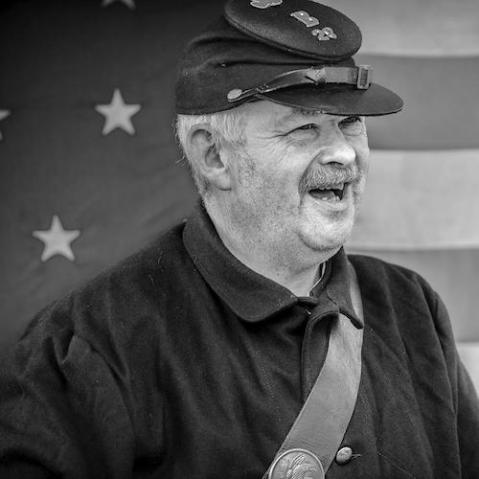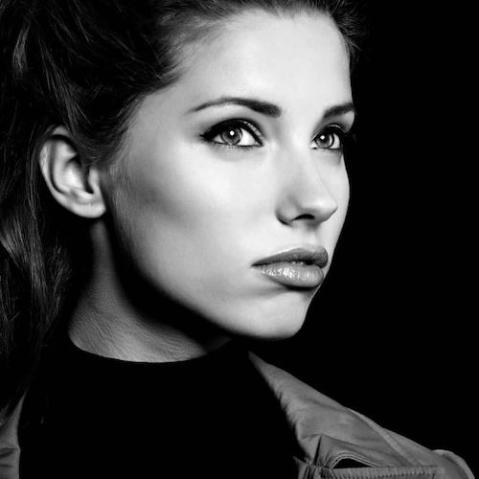The why and how of dodging and burning portraits
Dodging or burning small features can make a big difference to the final image and can often give portraits that crucial finishing touch. Gently burning in the sides of the face can emphasize bone structure and, perhaps rather like applying makeup, can make the person look slimmer.

Meanwhile, toning down a man’s receding hairline is another common request. Dodging is every bit as useful, whitening teeth or drawing attention to the eyes while still retaining the photograph’s convincingly natural appearance.
The why of dodging and burning
From the initial image, it’s clear the man is working in a shop or pharmacy or some other environment where a certain amount of cleanliness is required. In fact, it was in a food market. While his white coat helps you determine the picture’s context, its brightness seems to overwhelm the portrait. First, it tends to pull the eye away from the man’s face, the character of which is by far the most interesting part of the shot.
 Start with this image–where do you go from here?
Start with this image–where do you go from here?
Second, the white coat and the shirt’s open collar direct the eye downward and unbalance the image, making it top heavy. This image needs the coat to be burnt right down, and the background needs to be toned down at the same time.

With portraits, it’s always a good idea to check the eyes. They’re usually the picture’s most important feature, the first thing the viewer examines, so you would probably have checked their sharpness before you decided to make a black-and-white print. Here, what seems important is the eyes’ brightness relative to the rest of the picture—the whites are not different enough in tone from the rest of the face. Just like in the traditional black-and-white darkroom, a little careful dodging can work wonders.
The how of dodging and burning
If you’re using masks to localise your adjustment work, the order in which you dodge and burn is usually up to you. In this instance, work starts by dodging the eyes with a Curves adjustment layer. Drag the curve upward, roughly at first, then fill the layer mask with black before using a small, soft-edged brush to paint back the shape of the eyes. Now that any further work wouldn’t affect the rest of the picture, change the curve a couple of times, all the time watching the effect on the image. Don’t try to get it right first time—the beauty of the adjustment layer is that you can go back and fine-tune the curve or the mask. In this case, it was dragged it up a little more until the eyes were nice and bright.

Toning down the coat’s pure white was the key to this picture: a portrait rather than a snap of a man in a white coat. This meant burning the coat in with a particular type of Curves adjustment layer. To render whites as midtones, you drag the curve’s top-right point directly downward. It’s a distinctive curve and, as it ruins true whites elsewhere in the image, not one that you want to use without painting the mask. Here, use the Gradient tool to paint the effect in from the bottom of the page, and then burn in the background by painting white with a soft brush around the man’s head. Not all parts of a picture need the same amount of darkening, so notice the mask’s upper left has a gray area painted with the brush opacity set to 50%.
 The emphasis is now on the face, and no tones are overwhelming
The emphasis is now on the face, and no tones are overwhelming
Advanced Digital Black & White Photography is John Beardsworth’s complete exploration of photography’s most enduring look. Popular amongst photographers for its rich tradition and unique graphic qualities, digital black-and-white photography has much more to it than simply throwing away the color in Photoshop. Taking full advantage of the latest features in Adobe Photoshop, Lightroom, and Silver Efex Pro, the revised and updated edition of Advanced Digital Black & White Photography works at the frontier of black-and-white photography and digital imaging. You will discover the most creative ways to convert your pictures to black and white, how to fine-tune your monochrome images, and how to emphasize your subjects’ qualities. With both quick solutions to common problems and flexible, non-destructive methods for finer control, this book will enable you to produce the finest, most expressive black-and-white interpretations of your vision.
 Advanced Digital Black & White Photography
Advanced Digital Black & White Photography
John Beardsworth
Buy it now!
RRP for print edition: £17.99




